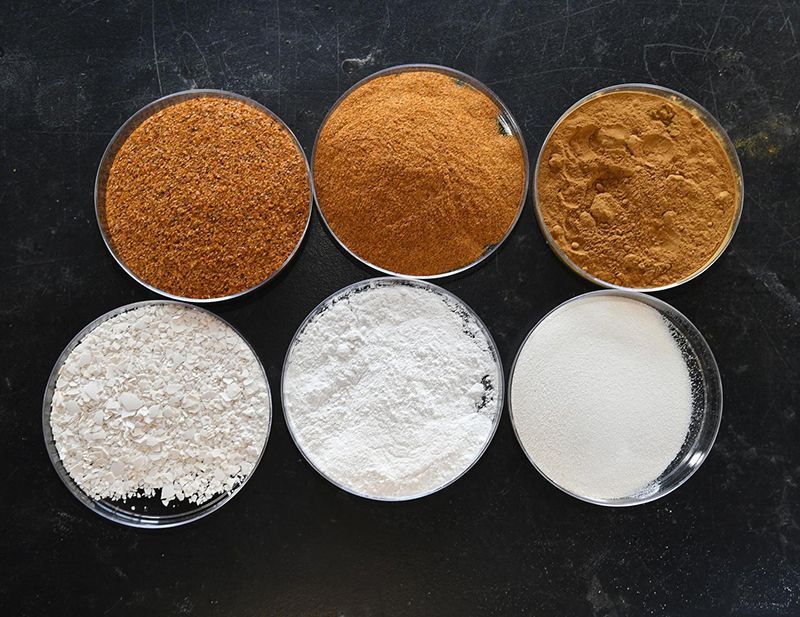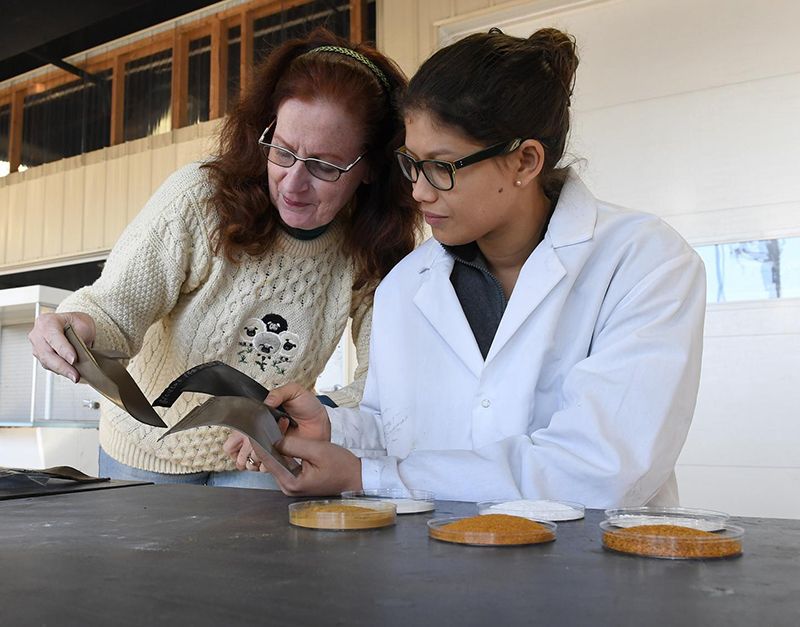From Trash To Treads: Turning Tomato Peels and Eggshells Into Tires
Scientists at Ohio State University are replacing the petroleum-based filler in tires with food waste
/https://tf-cmsv2-smithsonianmag-media.s3.amazonaws.com/filer/d8/12/d8124bb5-1dc2-4ab8-8ea9-1a3aafdb2151/food-into-tires-1.jpg)
Back when she lived in California, Katrina Cornish found herself wondering about those open trucks she saw carrying big loads of ripe tomatoes. Why, she thought, weren’t the tomatoes on the bottom crushed into big red puddles.
The reason, she would later learn, is that the tomatoes were bred to have tough skins that allowed them to withstand all that weight from above.
That bit of knowledge would come to serve Cornish well after she moved to Ohio State University, where she is a biomaterials researcher. Recently, she and her research team discovered that not only those tough tomato peels, but also crushed eggshells, can be effective replacements for the petroleum-based filler used in car tires.
“What you want in a filler is something really tough and strong,” she says. “That was why we looked at the tomato peels.”
The filler of choice in tires and other rubber products has long been something called carbon black, a powdery carbon product that comprises 30 percent of most tires. In fact, it’s the reason many rubber products are black. Carbon black helps makes the rubber in tires more durable.
But it is in increasingly short supply as demand for cars is rising rapidly in developing countries. At the same time, carbon black production in the U.S. has dropped in recent years as the EPA cracked down on plants emitting excessive amounts of sulfur dioxide and nitrogen oxide.
That has made U.S. rubber manufacturers more dependent on overseas companies for a product that has always been susceptible to fluctuations in world oil prices.
The potential of food waste
So, being able to use food wastes to reduce the amount of carbon black needed could lower costs. It also could bring environmental benefits. “One reason these are such an asset is the whole sustainability issue,” says Cornish. “Carbon black is produced with petroleum. If you could start replacing some of this non-sustainable material with sustainable material, then you’re helping to wean us off petroleum.”
There’s clearly no shortage of food waste in America. Americans consume more than 30 pounds of tomatoes per person per year, according to the Department of Agriculture most of them canned or processed in some way, such as sauce on pizzas. Food companies peel and discard the tough skin. And, every American consumes, on average, close to 270 eggs a year, bringing the total in the country to about 86 billion. Roughly 40 percent of those eggs are used by food companies, which end up shipping tons of cracked shells to landfills. There they sit for a long time because they don’t break down very easily.
“We thought that using eggshells as filler would be a better fate than ending up in the landfill,” says Cornish. “And I was very pleasantly surprised when it turned out that they are a very effective reinforcing filler, and not a diluent filler.”

As Cornish explains it, a diluent filler is one that can make a composite weaker and stiffer, the more it’s added to a product. It reduces cost, but also lowers quality. By contrast, a reinforcing filler increases the product’s strength, although it also can reduce its elasticity.
“But with some of these new fillers, the eggshells and tomato peels, when used in combination with carbon black, we’re able to get an increase in strength, but not an increase in hardness or a loss of elasticity,” she says.
In other words, food waste fillers were found to strengthen rubber while keeping it flexible.
Sustainable alternatives
So far, the Ohio State team has tested eggshells or tomato peels successfully in combination with carbon black, reducing the amount of the traditional filler without replacing it. The researchers have not yet combined the two food wastes together in a filler. They’re working on identifying how combining the two—with and without carbon black—might change the unique mechanical properties each separately brings to the rubber’s performance. The goal ultimately would be to create “recipes” for different combinations to get results that best match what a manufacturer needs.
“We’ve already shown that you can get different combinations of properties just using them with carbon black, more than carbon black can do by itself. We feel we might be able to take it even further by putting the two together in an intelligent design predictive manner,” Cornish says.

She notes that the researchers have received a grant from Ford to work on a project using crushed eggshells in rubber parts, and that another rubber manufacturer has expressed interest in working with tomato peel filler.
The researchers have received feedback on their patent application for their bio-waste rubber composites from the U.S. Patent and Trademark Office, and Cornish says it will be resubmitted shortly. The technology has been licensed to a company Cornish owns, called EnergyEne.
Finding natural alternatives to be used in manufacturing products is nothing new for Cornish. She’s also overseeing a project to determine if a variety of dandelion native to Kazakhstan can be used as a source of rubber. About 10 to 15 percent of the plant’s roots are natural rubber.
A key for her, she says, is to keep your eyes open to the possibilities of the natural world.
“I come from a very broad background, and I’m very interested in a sustainable economy. In Ohio, farming is a huge industry, food processing is a huge industry,” she notes. “I wanted to look at what I could do as a non-food scientist related to the food processing industry. They’ve all got major wastes. Waste costs a lot of money. Waste goes in the landfill. So we evaluated what the wastes are and what we could do with them.
“And it’s turned out to be a spectacularly successful project. I don’t want this to sound patronizing, but most people don’t look around them and really see what’s out there.”
/https://tf-cmsv2-smithsonianmag-media.s3.amazonaws.com/accounts/headshot/randy-rieland-240.png)
/https://tf-cmsv2-smithsonianmag-media.s3.amazonaws.com/accounts/headshot/randy-rieland-240.png)